Combat craft of special forces of NATO
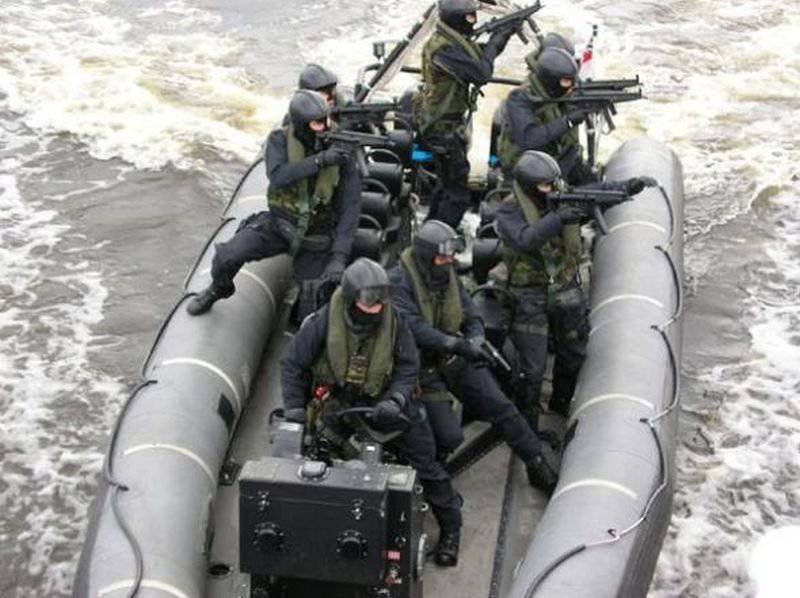
First commando
The beginning of the marine special forces in the US Navy comes from the hero of the war of the North and South, Lieutenant William Cushing. His launch at night in 1864 on the Roanoke River went unnoticed by the confederate battleship Albemarle. At close range, the Confederates discovered the approaching vessel and sounded the alarm. But Lieutenant W. Cushing, who was at that time the entire 21 year, was not taken aback. Having dispersed his launch and jumping over the barricade, he struck the battleship with a pole mine. Battleship went to the bottom. Six months before this event, the other side, made a very spectacular sinking of the “Northern” corvette. On a submarine, consisting of a steam boiler, and underwater-driven human power, they approached a corvette and used a pole mine. But since history the winners wrote, the commander of the first Special Forces was W. Cushing.
US vehicles for maritime special operations
In the United States for special units SEAL, the simplest watercraft is a canoe. And although it is somewhat reminiscent of a Indian canoe and is also put into action, this is a modern solution of especially strong, lightweight polymers. The main purpose - use in swampy and shallow areas. Often they are used to transport various cargoes by special forces. Such canoes are produced not only by small firms and companies, but even by such giants as Northrop Grumman.
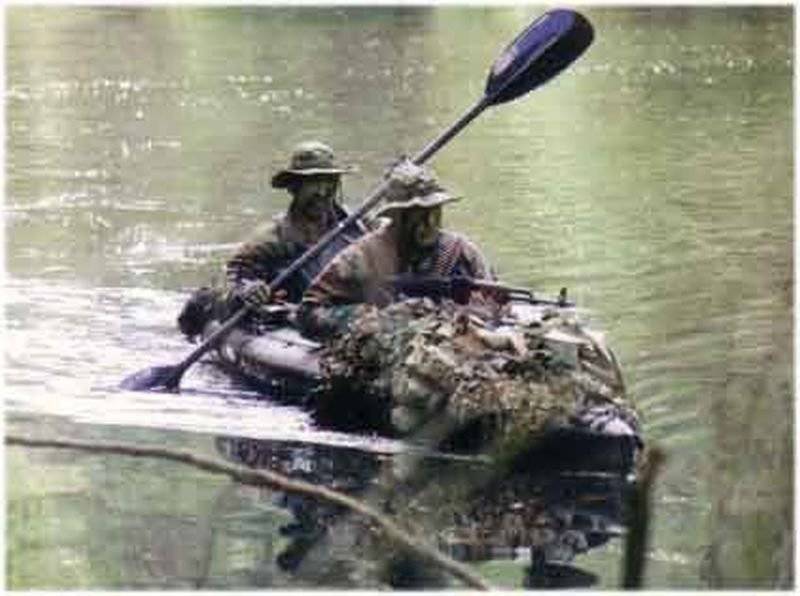
The next one of the most common boats is various rigid-inflatable motor boats - “RHIB”. The unofficial name is Zodiac, which came into use from the name of the French company of the same name, the first to build a boat of this type for the domestic traveler A. Bombard. Such small cutters have a body in the form of a deep letter V. It is made of a wooden base, aluminum alloys and synthetic materials. An inflatable "collar" is worn on the sides, which makes the boat unsinkable. As a propulsion unit, mainly powerful outboard or stationary motors are used. Such "RHIB" - the standard floating craft of the American sea units. Around 70 “RHIB”, produced by the US company “United States Marine”, are used not only in the US Navy, but also in many other countries and their special units.
Key Features:
- length 10.95 meter;
- the width of the 3.2 meter;
- draft 90 centimeters;
- weight 78.9 kilogram;
- diesel engine "Caterpillar", having power 940 hp;
- speed of 45 knots;
- economy speed 33 node for 370 kilometers.
The hard case is made of light kevlar alloys and fiberglass. In the central part there is a department of management, where instruments and equipment for navigation and communication are located. A radar antenna is located on a low mast; additional equipment can be mounted on it, such as lighting lamps and surveillance devices. The team "RHIB" three people - the commander and the sailors - the arrows. In the bow and stern of the boat is located on the firing point - large-caliber weapons on three-knife machines. Such boats can independently support with fire a special commando group or suppress coastal points or enemy boats. RHIB capacity - 8 people in full gear. The commando is conveniently located in the seats with shock absorption. Such seats, by the way, are much more convenient than the seats of an airliner. Commandos after sea transportation on such boats retain full combat readiness.
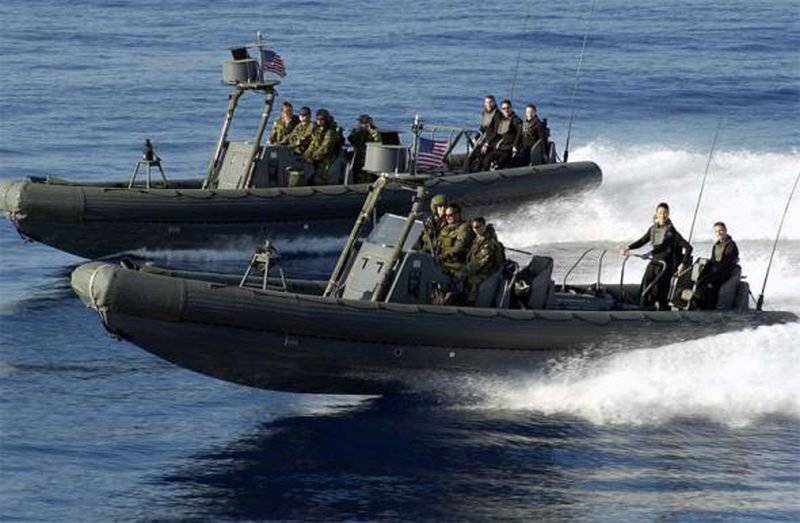
Another vessel for the elite maritime special units - boats of the type "Mk V". The US Navy has 20 units of such boats.
Key Features:
- displacement 75 tons;
- length 25 meters;
- the width of the 5.1 meter;
- draft 1.5 meter;
- 2 diesel MTU engines with power 4.7 thousand hp;
- capacity 16 people;
- speed of 35 knots;
- range 1100 kilometers;
- additional equipment 4 motor boats.
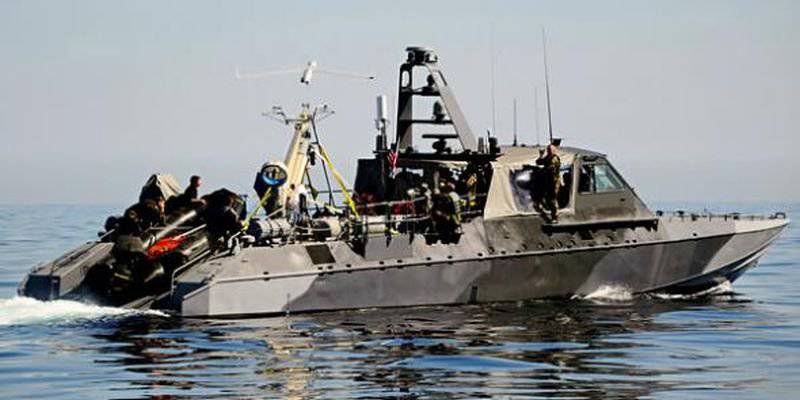
From boats with drones reconnaissance of a given area or object can be carried out. When performing large-scale operations, such boats are control points. Depending on the tasks performed, the boat is equipped with various weapons. The first squadron of US special purpose boats has 12 of these boats, the second squadron has 8 boats. With the help of C-5 "Galaxy" aircraft, boats can be deployed to a given area to perform operations. Recently, such boats have also appeared on the Black Sea, where, most likely, they carry out reconnaissance missions off the Russian coast.
England vehicles for maritime special operations
England's naval special forces also use Zodiac-type boats but with more modest characteristics. The main boats are modifications of “RIB” from the company “VT Halmatic”. Capacity 10-15 man, travel speed to 30 nodes, range 100 miles. Some modifications have large-caliber weapons. The British also tried to create for their special forces boats such as "Mk V". Initially, Halmatic built an interceptor boat of the 145 FIC type. The body was made of composite material, present in the body and Kevlar with balsa wood. It had: length 14.5 meters, width 2.8 meter, draft 1.3 meter, displacement 9 tons, travel speed to 60 nodes.

In place of this decision comes the original boat type VSV. The hull is made in the form of "cutting the wave." The British military for a long time hid the presence of such boats in service. But when NATO’s IUD was held off the Norwegian coast, the VSV boat for some reason flew to the stone coast where reporters had time to take a picture of it. The boat was built with a low silhouette, which increased its invisibility to the sea. The team and members of special units are located in the cockpit in the middle of the boat. Americans have long known about the use of such a boat by the British and themselves tried to create such a tool, but it seems that the test results did not impress them and there were no such boats for service with the US Navy. But the German company "Lurssen" has created boats of this type for the Indonesian Navy. Indonesia has 10 units of "VSV" type boats. Main characteristics:
- speed of 55 knots;
- length 16 meters;
- the width of the 2.6 meter;
- draft 1 meter;
- displacement 11 tons;
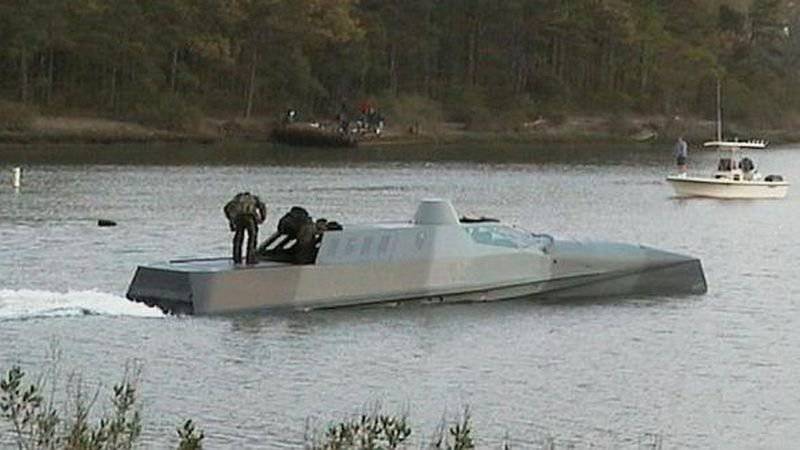
Another design of the boat was developed by VT Halmatic - a Belle-type boat, which translates as Beauty. The boat justifies its name and looks very elegant and harmonious. The upper part of the boat is made according to modern parameters of low visibility. The exhaust pipes of the engines are equipped with infrared radiation reduction devices. In the boat for members of special forces there are chairs with shock absorption. The internal climate is supported by air conditioning. The boat can be transported to the specified area of operation of the aircraft C-130 Hercules. The boat has modern navigation equipment, communications and detection equipment. The first boat British naval marines special forces received in 2006 year. Now, England has the Belle 4 boats. Main characteristics:
- capacity 10 people;
- payload 2.5 tons;
- average speed of 45 nodes;
- DU - 2 diesel engine «MAN».
- length 18 meters;
- speed of 60 knots;
- range 600 miles;
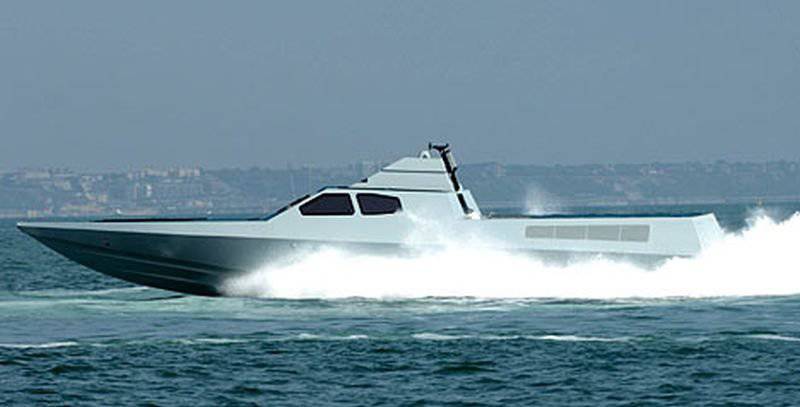
Underwater and underwater-surface means of transportation of special forces
Underwater means for performing secret special operations by commando units are prioritized for today. Some submarines of the United States have compartments for mini submarines - DDS. They contain mini-submarines of the type “SDV Mk III”. These submarines are made by "wet" type. That is, such a submarine contains commando in diving suits, and is, in fact, an underwater tug. The range of the submarine 19 miles, the source of energy - batteries are silver-zinc type. Has an electric motor in 18 hp The speed of 9 knots. Characteristics of the boat do not shine, so began the development of more modern mini submarines. The project was named "ASDS". In 2001, the first ASDS class submarine entered testing in the US Navy. The submarine created a dry type. The submarine was equipped with 4 thrusters, which improved the maneuverability characteristics. The carriers are Greeneville and Charlotte submarines of the type “Improved Los Angeles”. And strategic Ohio submarines must have ASDS units onboard the 2. It is possible to transport the submarine to the specified area by the C-5 “Galaxy” aircraft. Main characteristics:
- capacity up to 16 people;
- range 230 kilometers;
- length 19.8 meters;
- displacement 55 tons;
- a team of two people;
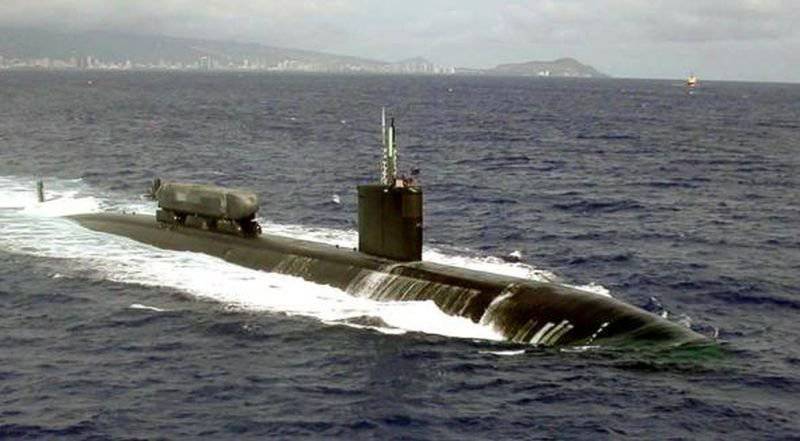
The company "Oregon Iron Work" produces for the marine special forces boats of the type "Sealion". This is a semi-gliding type boat. The narrow hull in the bow gradually passes into a sharp tetrahedron. A small superstructure ends with a sloping stern. The boat looks something like a dagger. The main idea is the use of ballast tanks, which, if necessary, are filled with water, and the boat almost completely goes under water. About twenty centimeters of the superstructure remain above the sea to monitor the situation. It can be said that “Sealion” is a semi-submersible type boat for quick movement to a given target. The United States has placed similar submarines for export to Singapore. Changes in the submarine - modified the aft part of the setting. In the field of creating such ships recognized leaders of the DPRK and Iran. Iran is building such facilities on the technology of North Korea. Of course, such boats are inferior to American submarines in many ways. Main characteristics:
- length 21 meter;
- capacity 8 people;
- speed of 40 knots;
- used technologies "stealth";
- additional equipment - 2 motor boats.
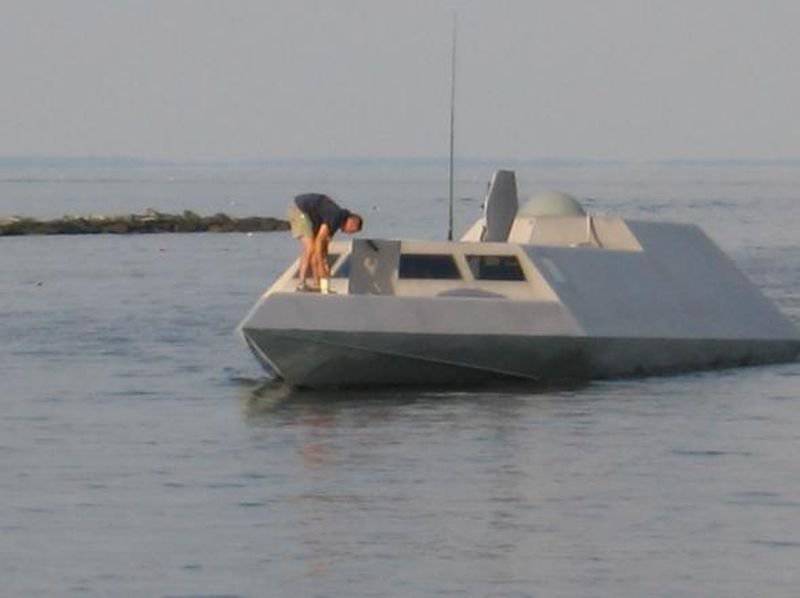
But the semi-submersible boats are not always satisfied with special forces, nevertheless, even in such a state it can be detected. To reduce the possibility of detection by the enemy to a minimum, STIDD Systems offers the latest project “MRCC” - this is an innovative craft for commandos. "MRCC" is made in the form of a multifunctional platform - speedboat, semi-submerged craft and mini-submarine. Team platform 2 person. Now “MRCC” is undergoing various tests and it is not yet known whether it will be used by American commandos or not. Now the main drawback is obvious - the “wet” delivery of special forces in all positions, but no one has yet invented the ideal means, so for the broad conditions of application we have to sacrifice something.
Key Features:
- length 32.5 feet;
- DU diesel with power 435 HP, 2 electric motor;
- surface speed of the 32 node;
- submerged speed of 5 nodes;
- capacity 6 person or 0.8 tons of cargo;
- range 200 miles.
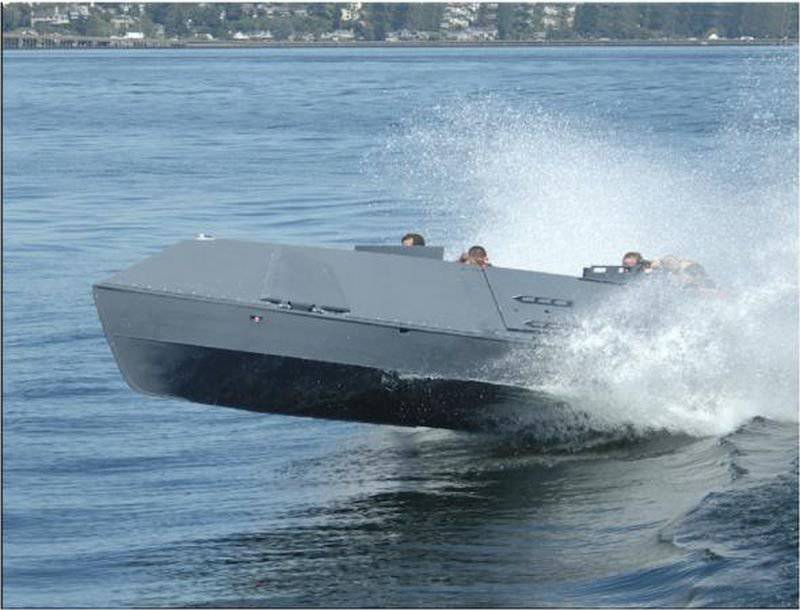
Something similar was created by the designers "DCE" for the Swedish commandos - the SDV project. It differs from “MRCC” by the presence of 4 electric motors for underwater travel, with minor changes in the hull design.
Key Features:
- length 10.3 meter;
- surface speed of 30.5 nodes;
- submerged speed of 5 nodes;
- payload 1 ton.
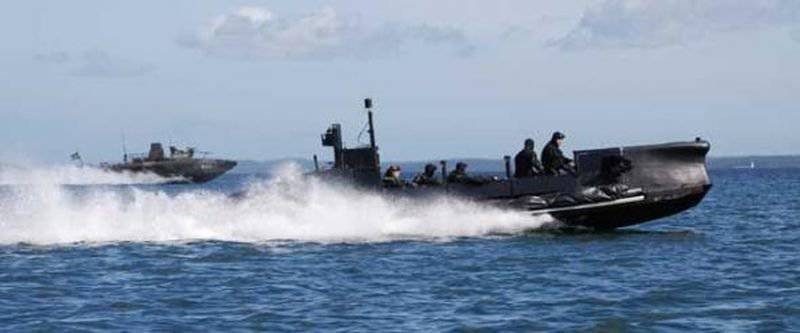
Aerochips for transporting special forces
The development of a new transport for commandos, which can not only dive and swim, but also fly, is in full swing. Such a device is being developed by DAPRA, this concept has already been proposed for consideration by companies willing to design and build such a technically complex hybrid.
Basic requirements for aerostroke:
- range over 1800 kilometers;
- range in surface position 185 kilometers;
- range of underwater 22 km;
- capacity 8 person or 0.9 tons;
- time spent under water 8 hours.
In the United States, there have already been attempts to build aeroship. The flying Conveir hybrid 64 of the year could have been a breakthrough in this area, but the fierce resistance to this project by Senator A. Elendra closed the necessary funding, and the hybrid was not created. And here the idea of aero-bearings was revived again, let's hope that modern technologies will make this task less difficult than it seems.
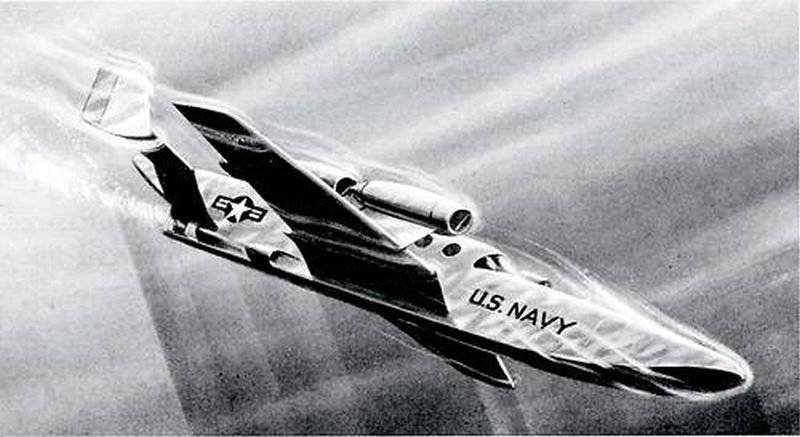
Amphibians for special forces
Floating vehicles are used for special operations and the landing of troops since the Second World War. Amphibians are united by one important drawback - the low speed of overcoming water obstacles. For example, the well-known “LARC-5”, which has the ability to translate two dozen people, overcomes water obstacles at a speed of 16 km / h.
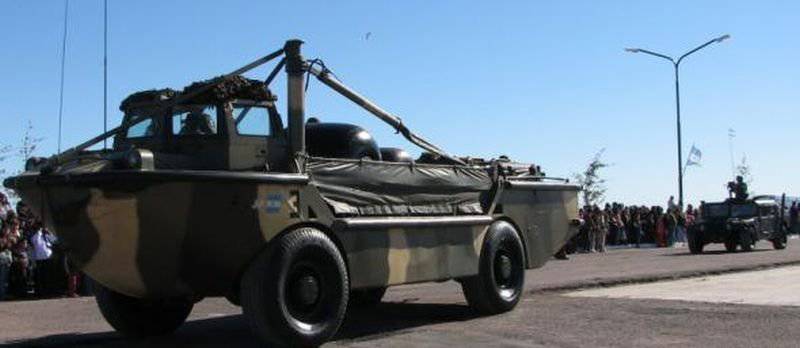
In the 60s, the United States attempted to create a hydrofoil amphibian. Two models of this type of equipment were created - “LVHX-1”, which had fully submerged underwater wings with automatic control and “LVHX-2”, which had a front crossing wing and an entirely submerged rear controlled wing. Estimated speed to overcome water obstacles 65 / 84 km / h. But on tests, amphibians showed that they were larger than machines than floating machines — constant problems with hydraulics, manual folding of wings, and many other problems led to the rejection of these amphibians. But this area is quite interesting for the military and the development of amphibians continued. Now for equipping the SEAL commando, Gibbs Technologies has offered the amphibian Humdinga and the quad quad bike Quadski.
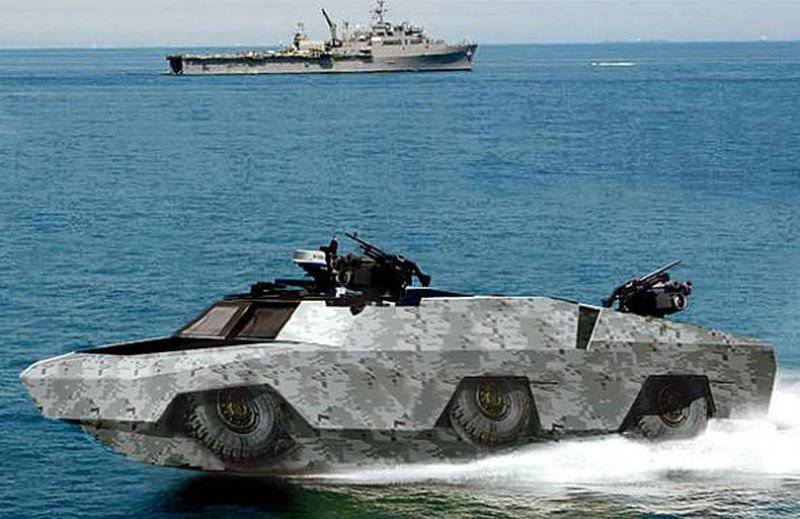
Amphibian of the “Humdinga” type has a wheel formula 4 XX4 and is equipped with an engine in the 350 HP. Ground speed up to 160 km / h, surface speed 64 km / h. Capacity 5 people. The Quadski amphibian is designed for 2-s people, but its speed is equal to 72 km / h both on land and on water. The transition to the use of water-ground mode occurs simply by turning on the button. Under the water variant, the wheels of the ATV are sunk in special "clutches" and become ship's anchors. When driving on water at high speed, the wheels do not interfere with movement and do not reduce speed. Quads have aroused a healthy interest among American commandos. After a series of tests, the company was asked to refine the car along with the main military contractor, Lockheed Martin. Three high-speed amphibians are currently being developed: ACC / E based on Humdinga as an expedition vehicle and amphibious based on the Quadski-ACC / R ATV.
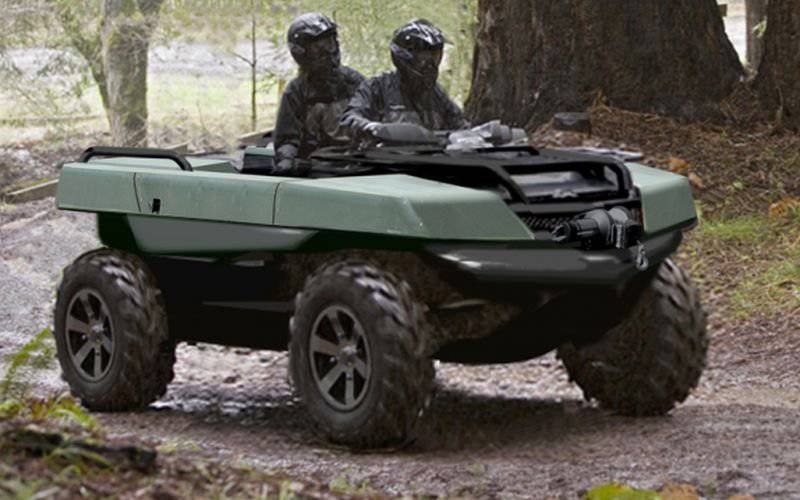
Information